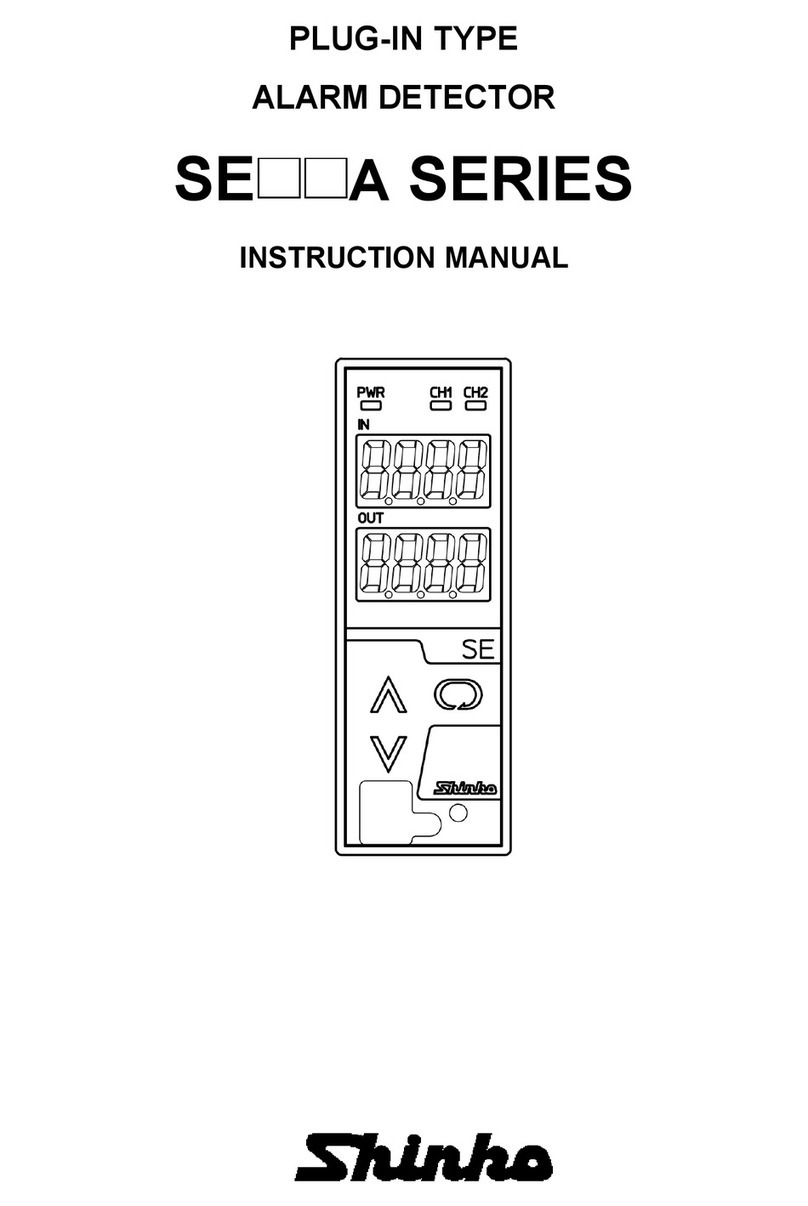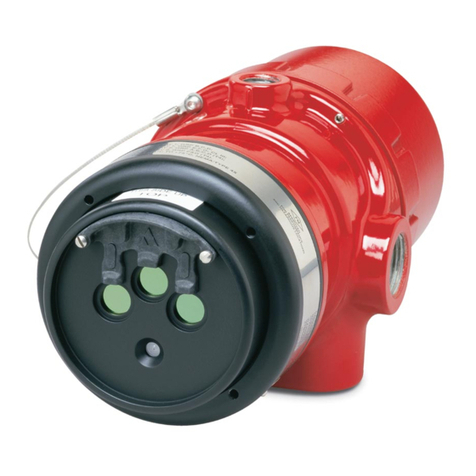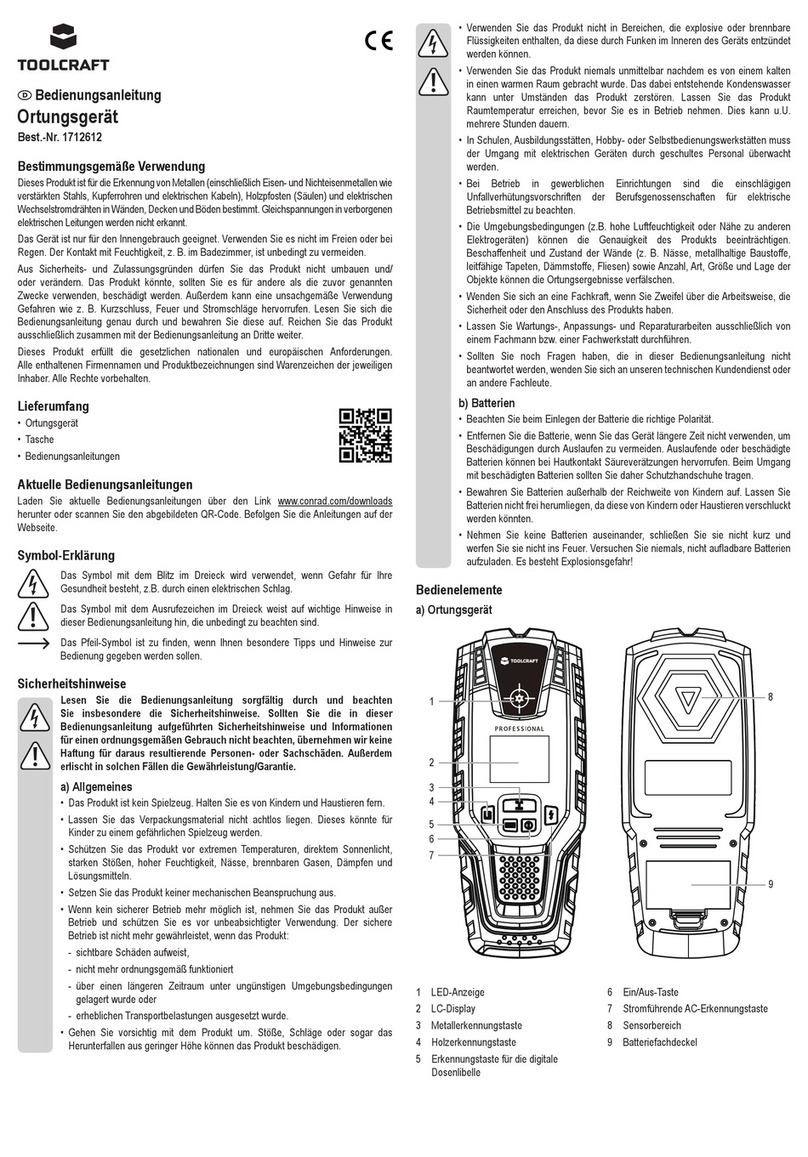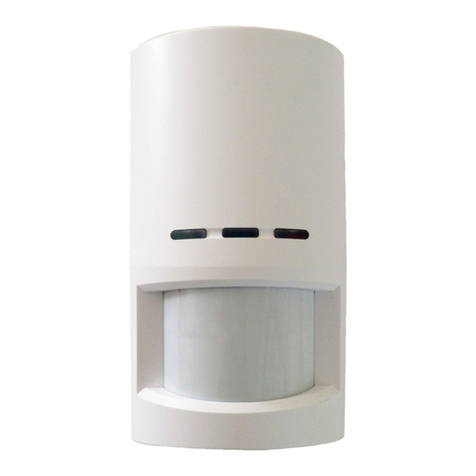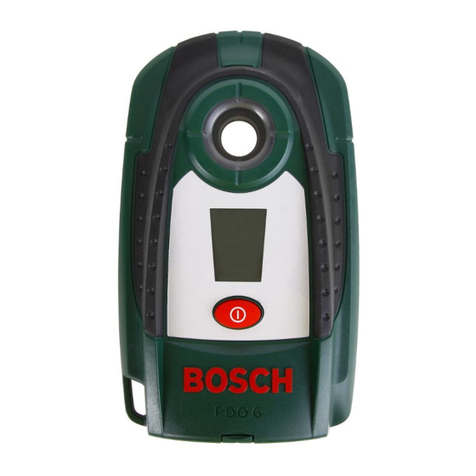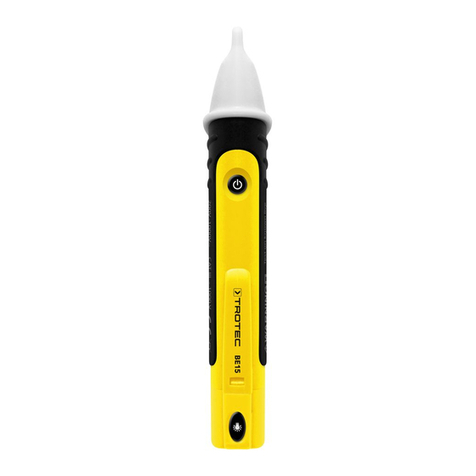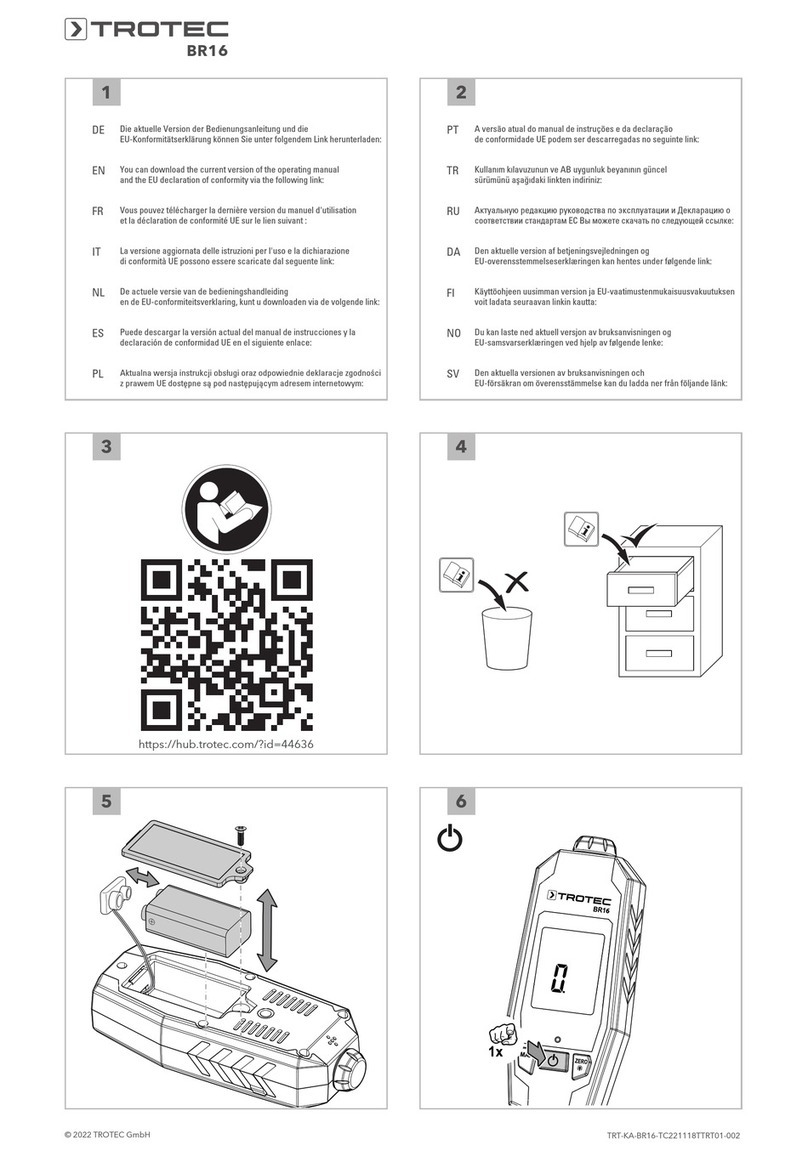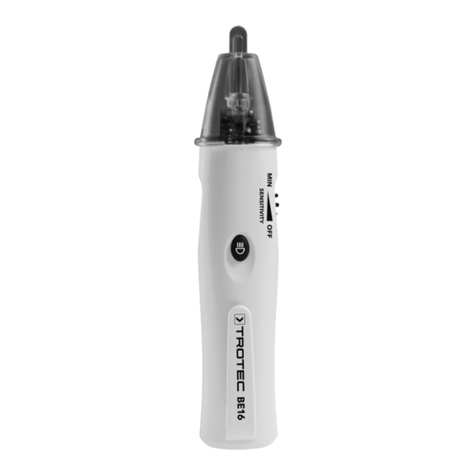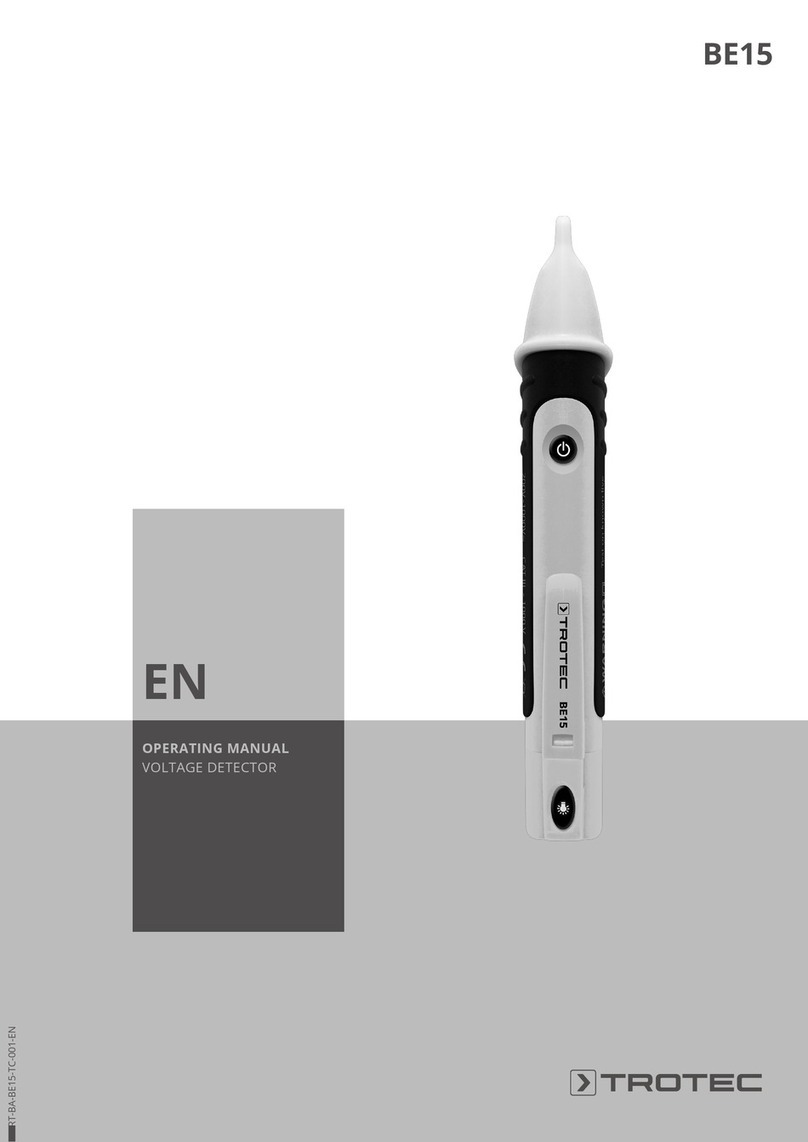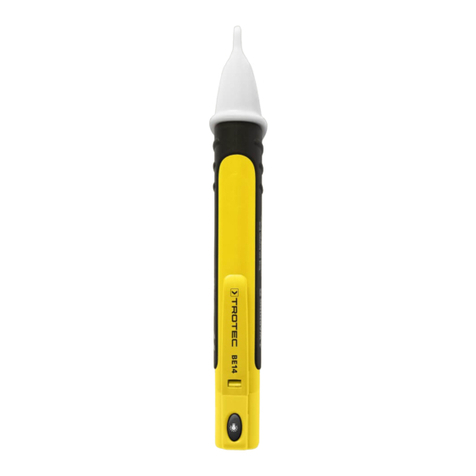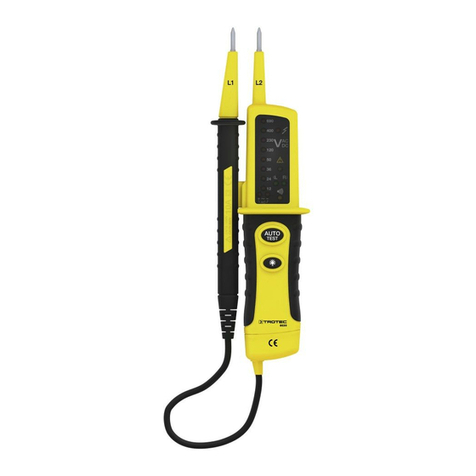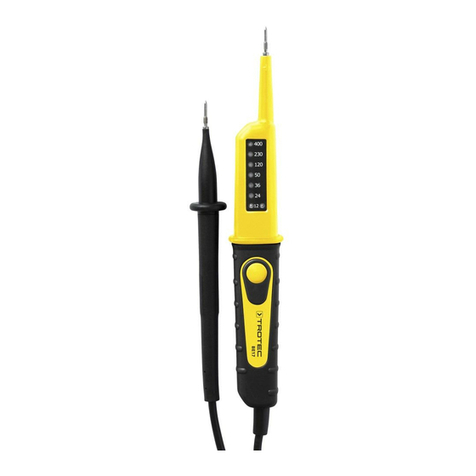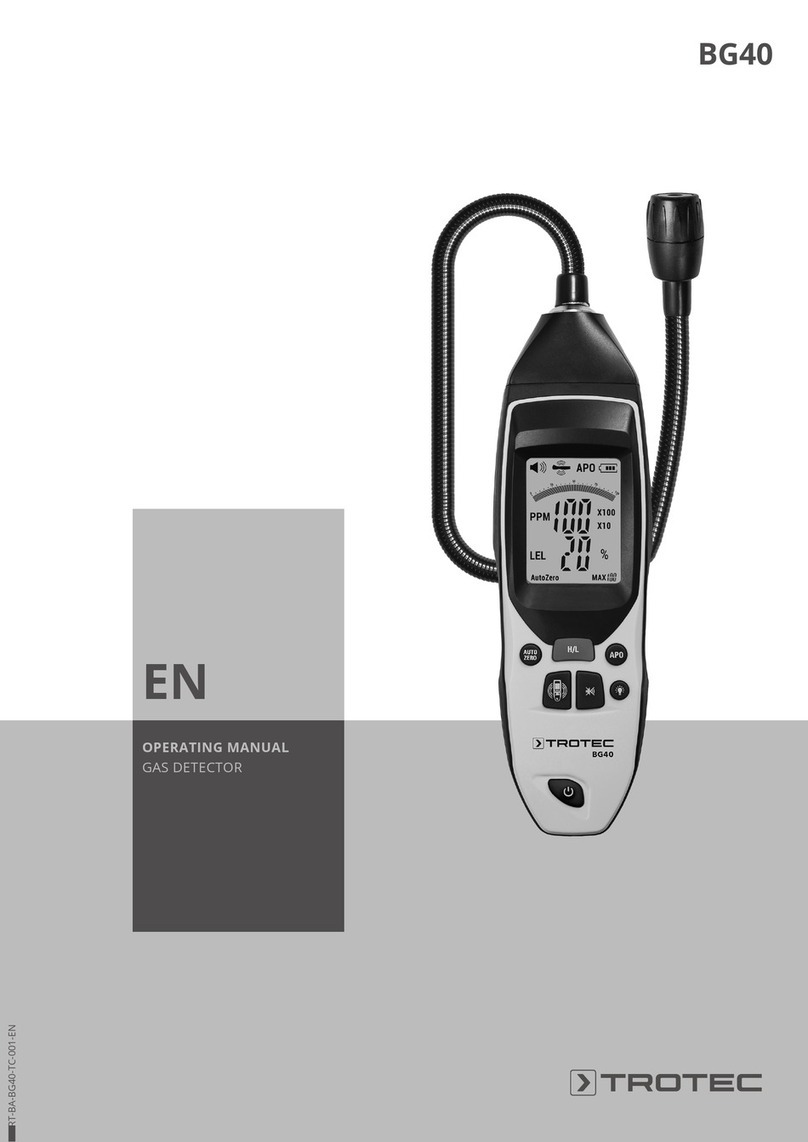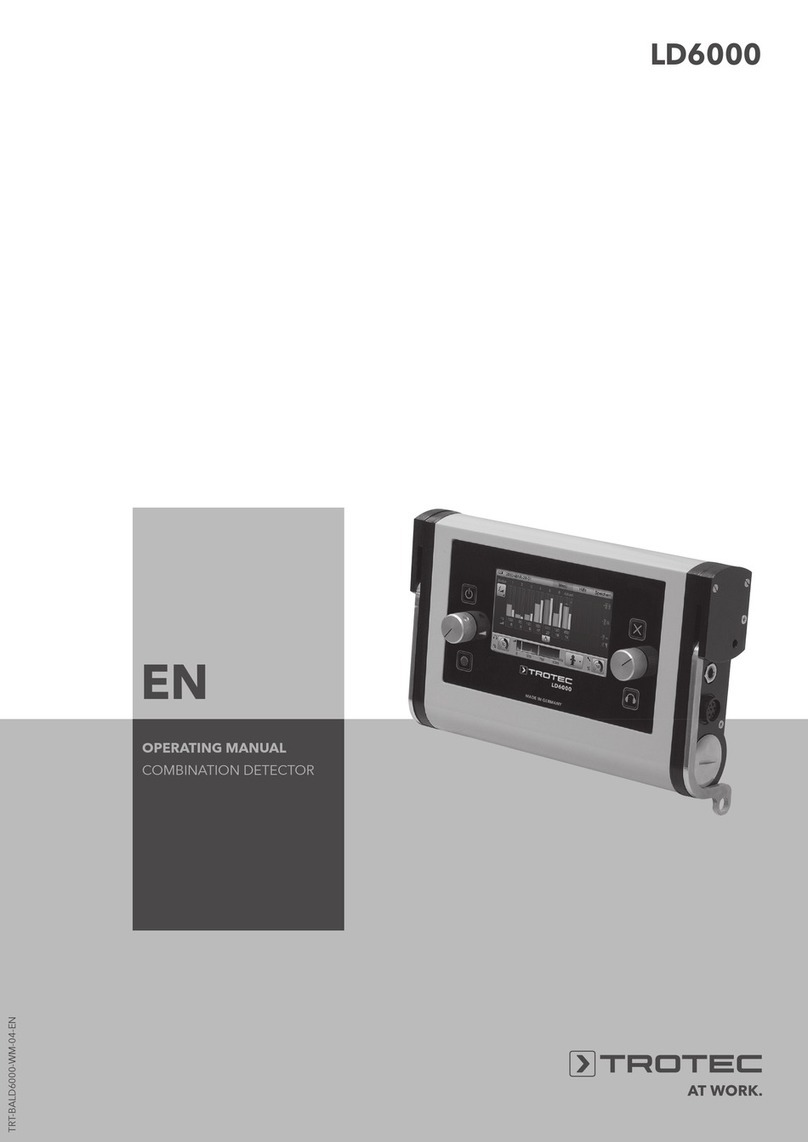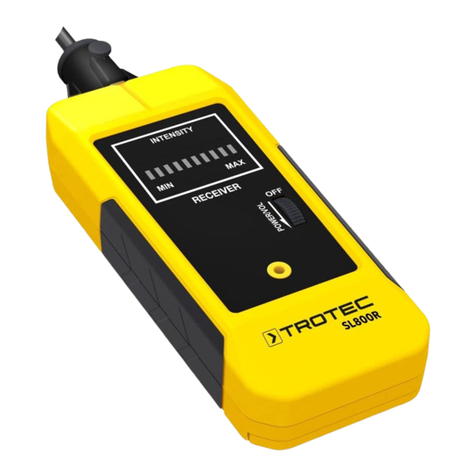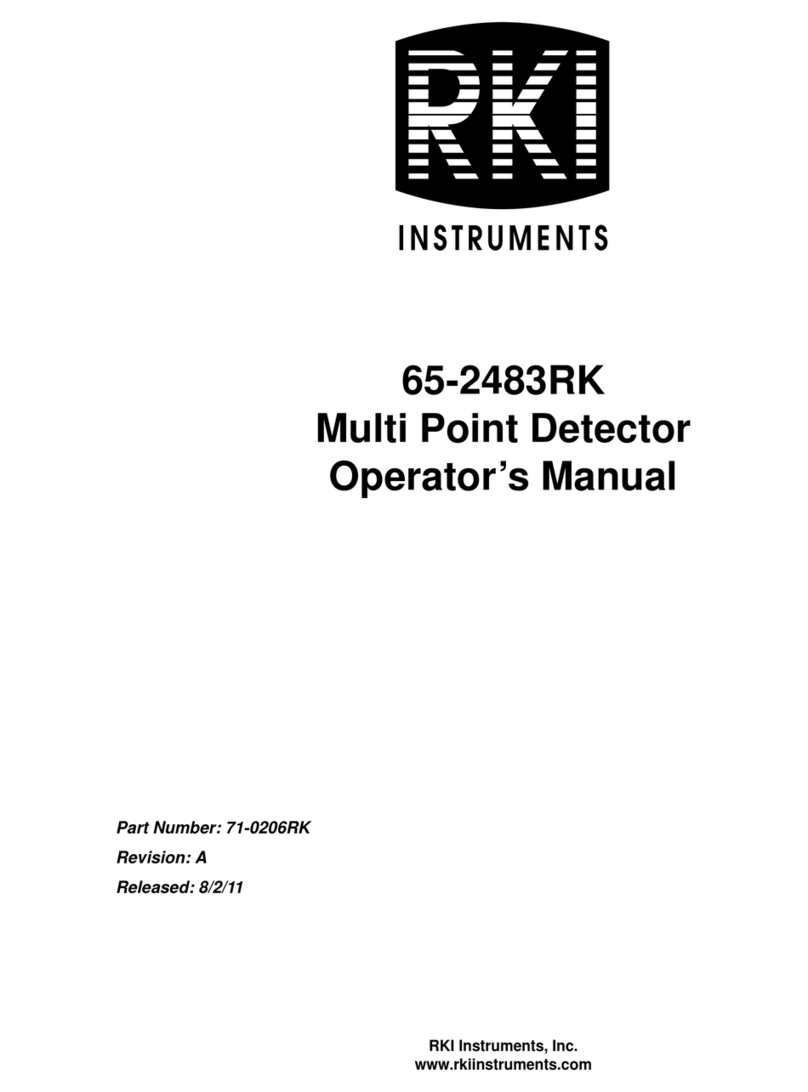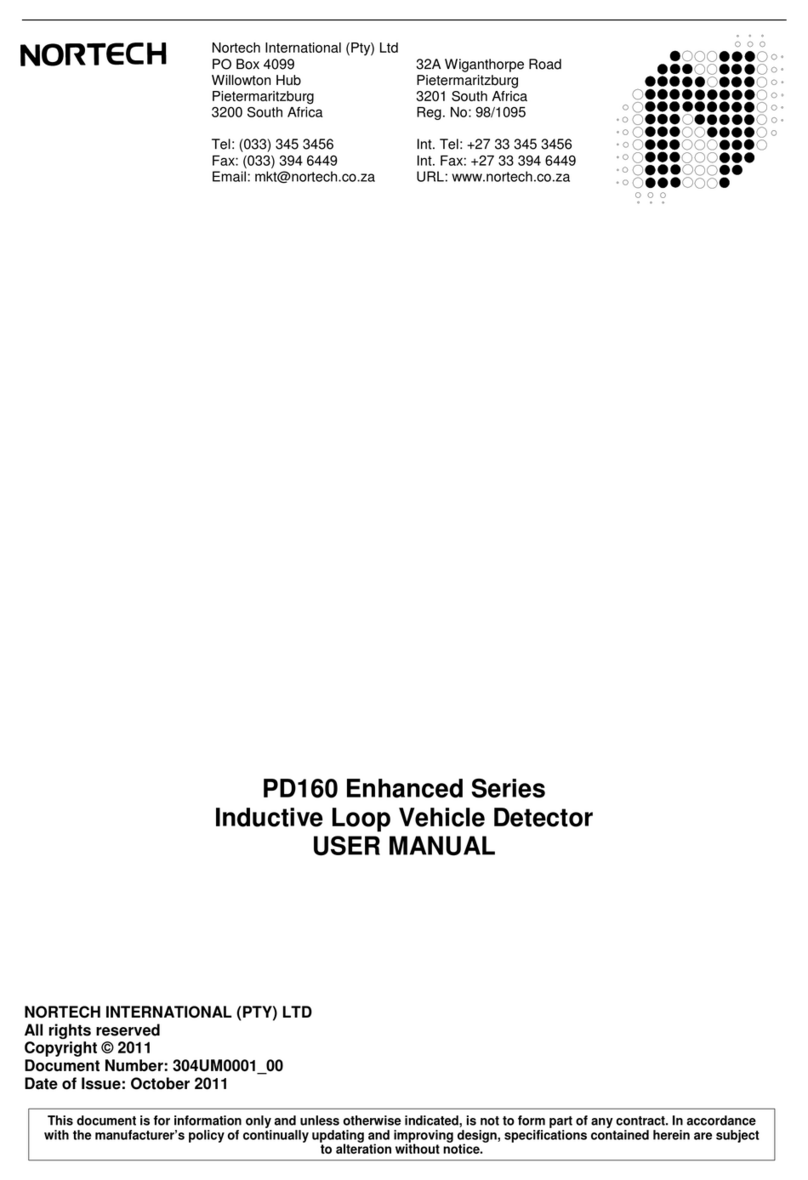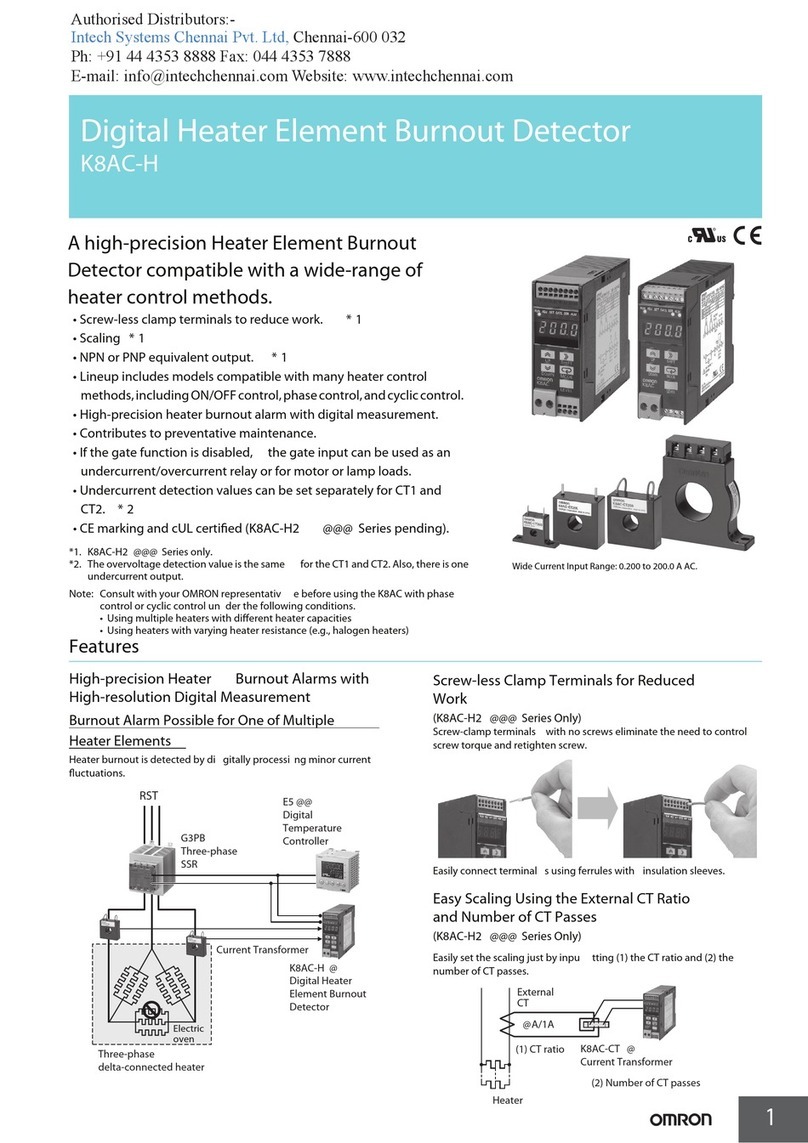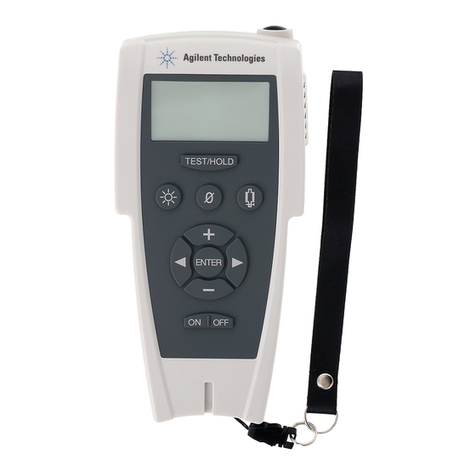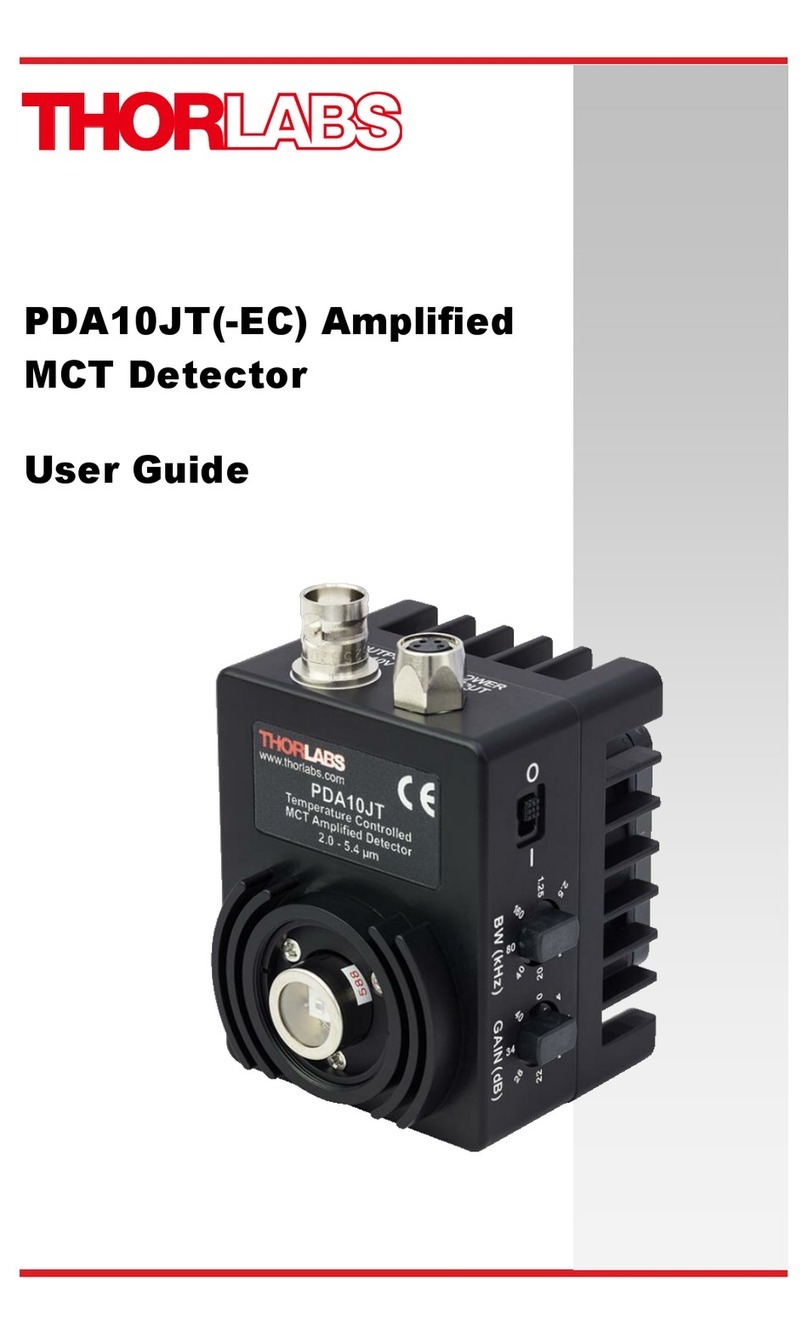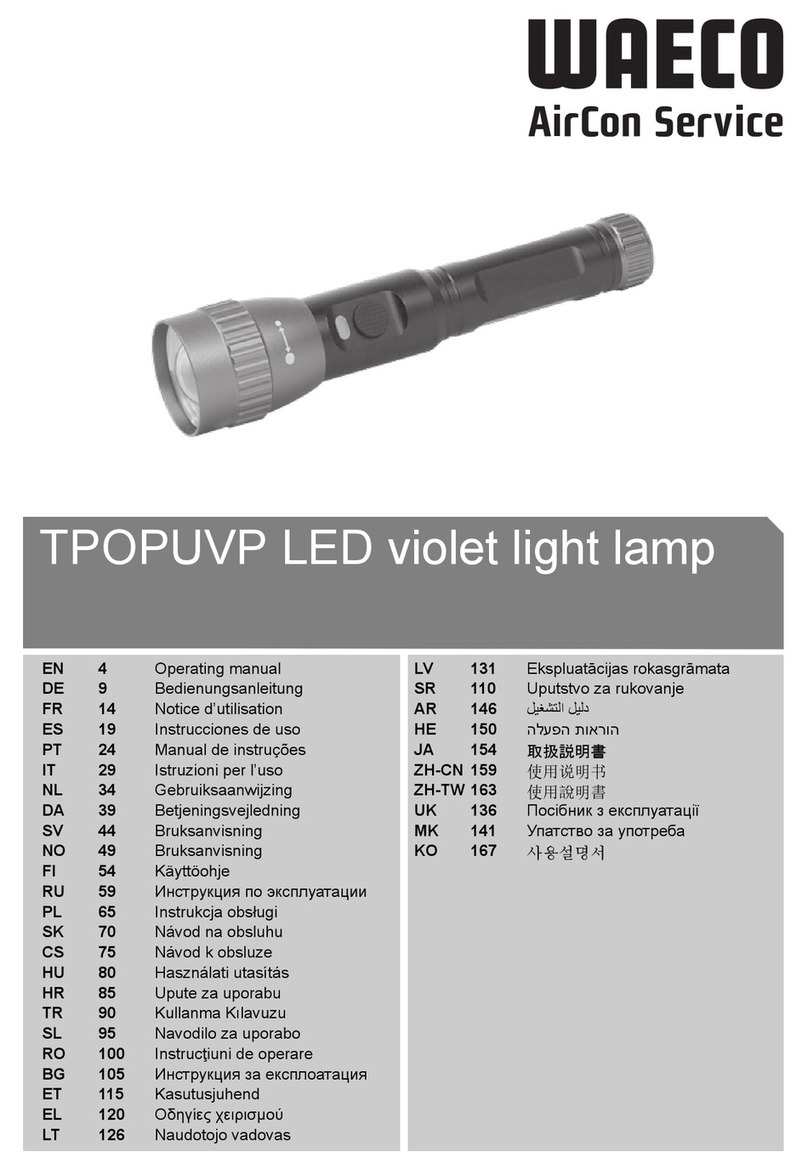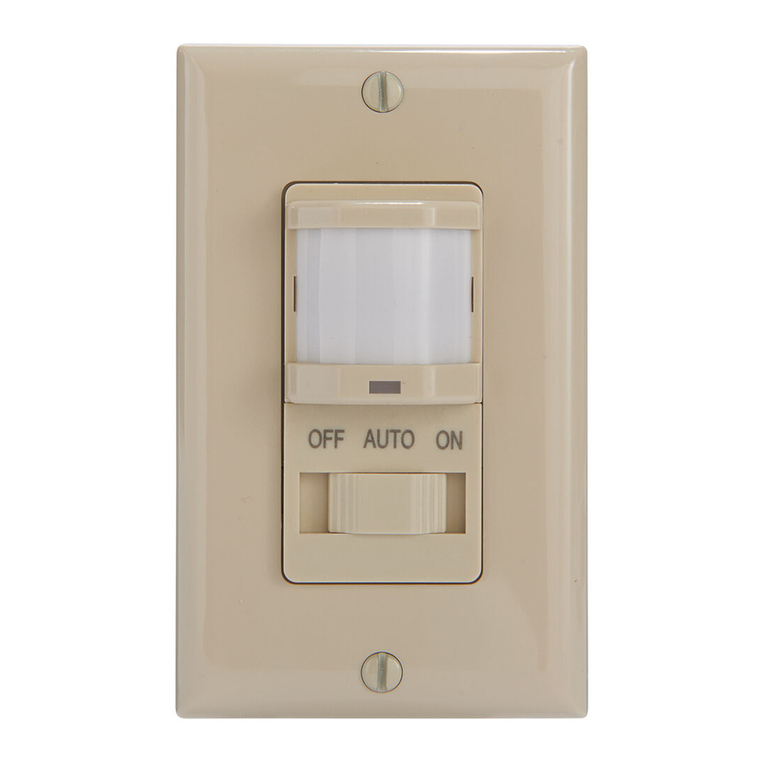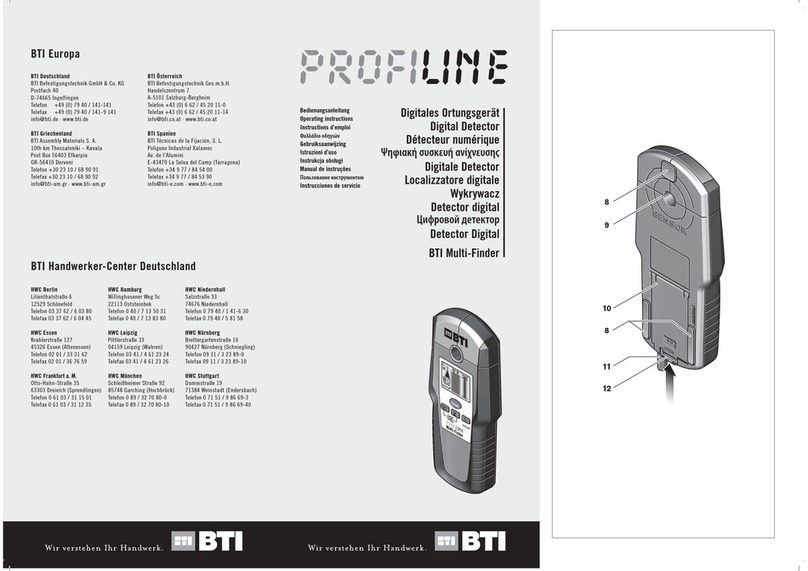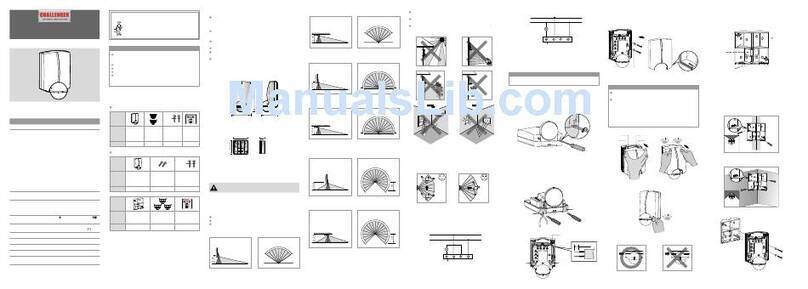
7 EN
Operating manual – ultrasonic detector SL3000
Using the attachments for the airborne sound probe
You can also use the probe included in the scope of delivery in
combination with the two attachments, which are also included
in the scope of delivery.
The attachments serve for an improved pinpoint location of the
ultrasonic signal:
• The acoustic horn(19) is suitable for detection even over
large distances of several metres.
• The shotgun(18) can be used for a more precise pinpoint
location over shorter distances.
The attached tip(17) can, for instance, be used for
checking weld seams or valve seals.
To use the attachments, please proceed as follows:
1. Carefully place the rubber grommet of the attachment onto
the airborne sound probe. Pay attention not to damage the
grid at the airborne sound probe.
2. If you no longer need the adapter, carefully pull it off the
airborne sound probe.
Using structure-borne sound probes (optional)
A structure-borne sound probe utilizes structure-borne sound as
bearer of inner states and processes. The device combination
thus works like a stethoscope, but specifically for ultrasound.
Structure-borne sound probes are suitable for the following
fields of application:
• Early detection of wear at ball, roller or slide bearings
• Checking centrifugal pumps for cavitation
• Tightness tests of fittings
• Continuity testing or functional check of steam traps
üThe structure-borne sound probe is assembled.
üThe device is switched on.
üThe volume of the headphones is set to minimum.
1. Put on the headphones.
2. Hold the probe to the test object.
3. Carefully increase the volume at the headphonesuntil you
can hear a sound.
4. Move the probe towards the ultrasound source.
5. Down-regulate the volume at the headphones when
approaching the source of ultrasound.
6. Whilst approaching the source, the sound grows louder and
the scale indicates a higher sound level.
Activating maximum value detection
1. Press the MAX button(5) to activate the function.
ðThe maximum value of the current measuring cycle is
indicated in the bottom left corner of the display.
Switching on the display illumination
1. Press the light button(10) to switch the display illumination
on or off.
ðThe illumination automatically switches off after approx.
20 s.
Adjusting the display contrast
The display contrast can be adjusted in order to adapt the
display to the individual ambient conditions.
The default setting is 50%.
1. Press the OK button(4) to open the contrast settings menu.
2. Press the arrow buttons(3, 9) to increase or reduce the
contrast.
3. Confirm the setting by pressing the OK button(4).
Switching the device off
1. Press the power button(1).
ðThe display goes out.
ðThe device is switched off.
